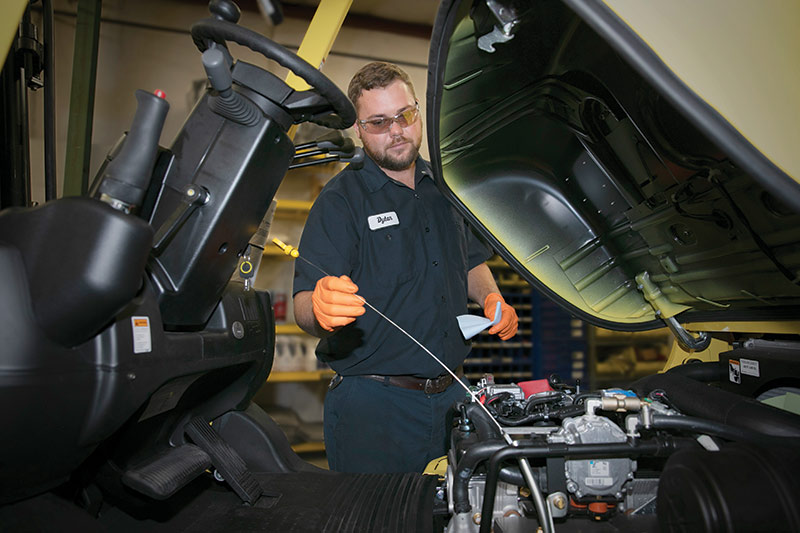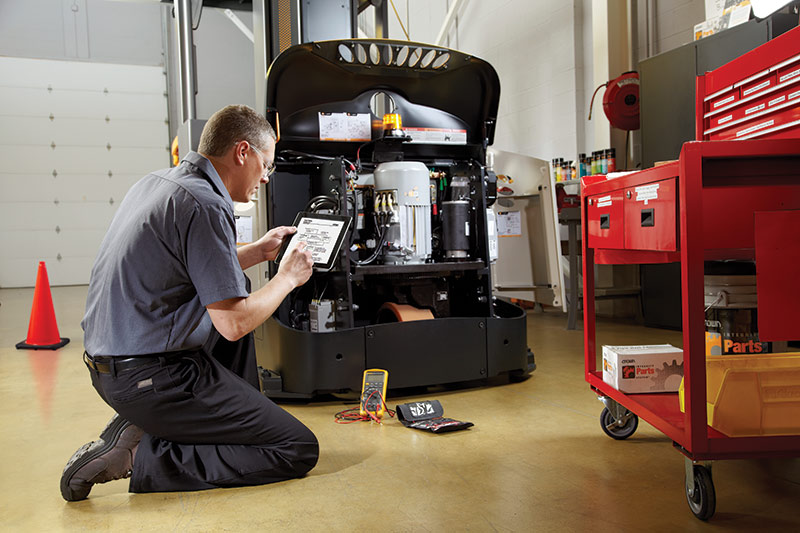You need to take into consideration two views on lift truck maintenance. One is macro and the other is micro.At the macro level,...
You need to take into consideration two views on lift truck maintenance. One is macro and the other is micro.
At the macro level, it’s all about managing the life expectancy of your lift trucks as a fleet. Yes, the entire fleet. Even across five or 10 locations for a single company. This is a big, broad concept used at certain leading companies, and is, by no means, a standard procedure most places. But there’s nothing that says this can’t be the future.
At the micro level, it’s all about managing the operational health of each truck in your fleet on an individual basis. And that’s all the way down to how batteries are managed. This has long been the maintenance sweet spot for trucks.
Believe it or not, the two are not in competition with each other. In fact, they are complementary. While it does make the lift truck maintenance equation a bit more difficult to solve, another condition has put a new emphasis on maintenance.
New lift truck lead times right now are as much as 100 weeks. Clearly, we are not in a time of wish and replace. That requires elevated maintenance planning and execution on your part.
Fortunately, lift truck suppliers and dealers have given this more than just a passing thought and have some valuable insights to make maintenance programs effective for you. Here are some of the latest thoughts from these experts.
![]()
At the micro level, it’s critical to manage the operational health of each truck in the fleet.
Managing the fleet
Let’s start with the big picture premise here. “A lift truck fleet needs to be managed broadly. Not even facility by facility, but as a complete fleet, regardless of its size,” says Tim Roth,Crown Equipment’s director of branch aftermarket operations.
When Roth talks of the complete fleet, he really does mean all of it from rentals to trucks that have been out on the floor long enough that they don’t owe anyone anything. While each of these trucks has its own hourly cost, the key number here is the overall hourly cost for the full fleet.
Kris Rendtorff,fleet analytics supervisor at Associated, a Raymond dealerin Chicagoland, breaks those costs down this way. “It’s all about the cost to operate each truck for one hour. As an example, in its first year of use, a lift truck could well cost just $1/hour to operate. But by the time the truck is 10 years into its service life, that number is probably a lot closer to $5/hour.”
In turn, at any point in time, there is an average cost per hour to run the entire fleet. That compares, says Rendtorff, to your pre-determined acceptable hourly cost for the fleet. He calls that your economic life expectancy.
Ideally, none of this came up this morning. Instead, you’ve been tracking both fleet and individual truck maintenance (details on this later) for some time. You already know the profile of your fleet and have a breakdown of it by truck type, application and ownership (rental, lease, owned).
Enter your rotation strategy. Quite simply, it’s now time to go micro and determine which trucks need to be rotated out of the fleet at a specific point in time without sacrificing operational performance out on the floor. This is critical.
“How trucks are used has changed from being an occasional tool to an integrated part of key processes,” says Ken Deters, Hyster’s director of service operations.
The performance of all trucks (including the debut of more autonomous lift trucks) directly impacts the flow of goods within the four walls. Deters says this requires sophistication on your part to offset the needs of first the fleet and then of individual trucks against the needs of the facility to handle and move product.
It’s also worth repeating that lift truck lead times add still another wild card to this decision tree. However, this rotation process is clearly an effective way to manage your fleet.
Roth tells the story of one large lift truck user that is making a run at the macro approach to lift truck maintenance. While the company is in the early stages of a pilot at one facility, it is already seeing the benefits of a more proactive approach to service in terms of improved uptime, and what Roth calls an elevated overall health of trucks. The company is now in the process of rolling it out from its pilot facility to a second one.
![]()
If an in-house tech staff isn’t practical, both dealers and lift truck suppliers have staff available on a contract basis.








 粤公网安备 44010602003952号
粤公网安备 44010602003952号